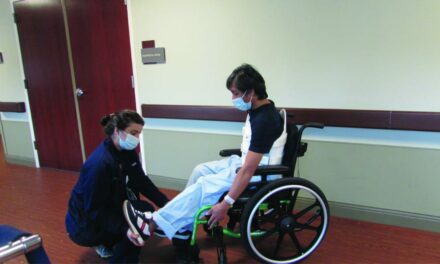After being implanted with tissue engineered to contain stem cells, paralyzed rats were able to walk independently and regain some sensory perception in their hind legs and tail, suggest researchers in a recent study.
In the study, led by Dr Shulamit Levenberg, of the Technion-Israel Institute of Technology and published in Frontiers in Neuroscience, researchers derived stem cells from the membrane lining of the mouth and induced them to differentiate into support cells that secrete factors for neutral growth and survival.
The research team also built a three-dimensional scaffold that provided an environment in which the stem cells could attach, grow, and differentiate into support cells. This engineered tissue was also seeded with human thrombin and fibrinogen, which served to stabilize and support neurons in the rat’s spinal cord, explains a media release from Frontiers.
Rats treated with the engineered tissue containing stem cells showed higher motor and sensory recovery compared to control rats. Three weeks after introduction of the stem cells, 42% of the implanted paraplegic rats showed a markedly improved ability to support weight on their hind limbs and walk. Also, 75% of the treated rats also responded to gross stimuli to the hind limbs and tail.
In contrast, control paraplegic rats that did not receive stem cells showed no improved mobility or sensory responses.
In addition, the lesions in the spinal cords of the treated rats subsided to some extent. This indicates that their spinal cords were healing, the release continues.
The researchers state, however, that the technique did not work for all implanted rats. Further research will be conducted to determine why stem cell implantation worked in some cases but not others.
Levenberg suggest that this study could help point researchers in the right direction toward providing medical treatments for spinal cord injury in humans.
“Although there is still some way to go before it can be applied in humans, this research gives hope,” he shares.
[Source(s): Frontiers, Science Daily]





